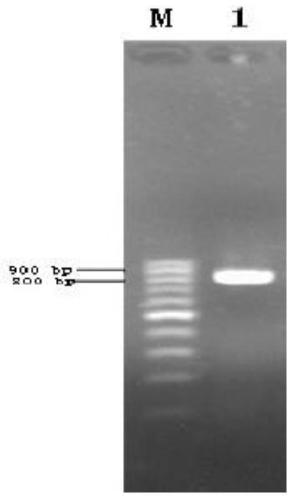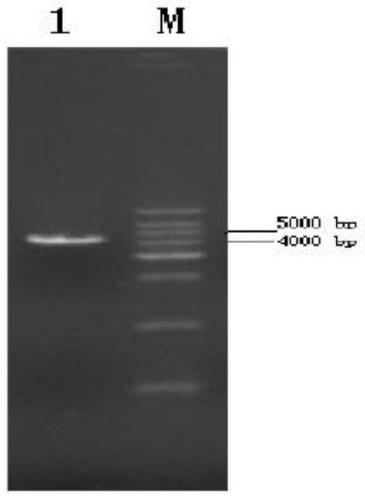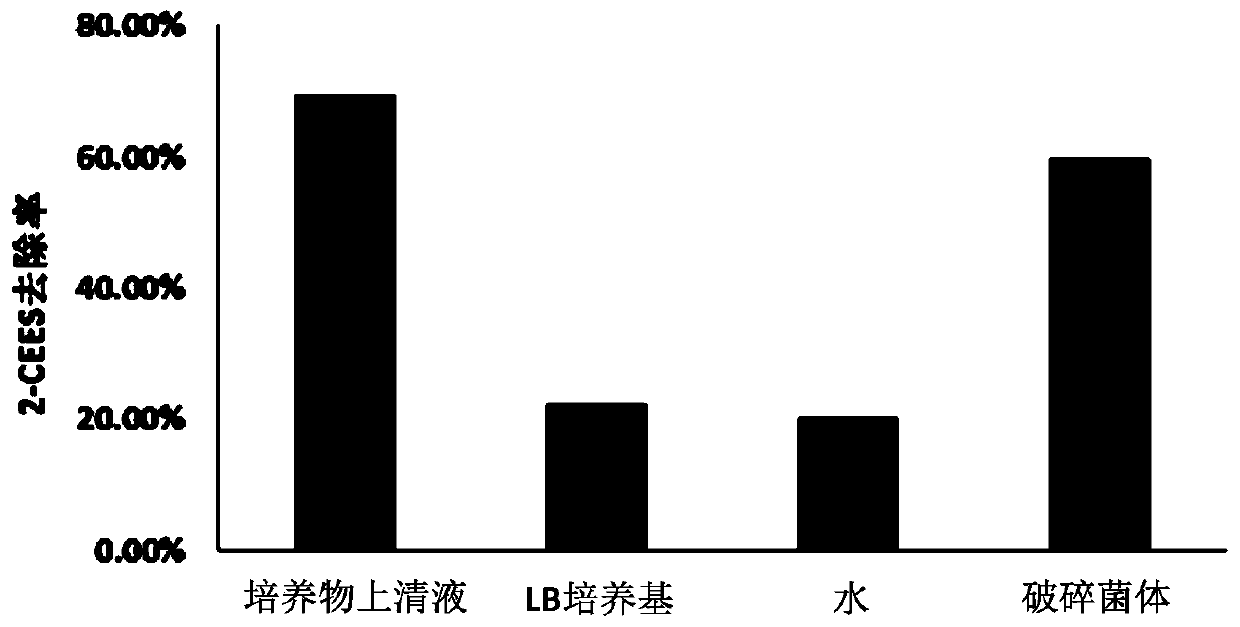Dehalogenase gene LinB, dehalogenase, dehalogenase genetically engineered bacteria and construction method and application method of dehalogenase genetically engineered bacteria
A technology of genetic engineering bacteria and dehalogenase, applied in the field of dehalogenase genetic engineering bacteria and its construction, dehalogenase gene LinB, and dehalogenase, and can solve the problem of high cost, complicated process, and limited chemical degradation method popularization and application, etc. problem, to achieve the effect of stable system and simple production process
- Summary
- Abstract
- Description
- Claims
- Application Information
AI Technical Summary
Problems solved by technology
Method used
Image
Examples
Embodiment 1
[0050] Construction and Verification of Dehalogenase Genetic Engineering Bacteria
[0051] 1), the acquisition of dehalogenase synthesis gene
[0052]The construction method and application of dehalogenase genetically engineered bacteria, through codon optimization, NdeI site should be introduced upstream, and Xho I site should be introduced downstream, so as to be connected with pET-28a(+) vector in the next step. Using the synthetic dehalogenase gene as a template, PCR amplification was carried out under the action of primer 1 (CATATGTCTCTGGGTGCTAA, shown in SEQ ID NO.3 in the sequence table) and primer 2 (CTCGAGTTAAGCCGGACGCA, shown in SEQ ID NO.4 in the sequence table). increase.
[0053] The amount of each component in the PCR reaction system (total volume 50 μL): 5 μL of 10XPfu DNA Polymerase Buffer, 1 μL of 10 mM dNTP mixture (2.5 mM each of dATP, dCTP, dGTP, and dTTP), 1 μL of each cloning primer 1 and primer 2 at a concentration of 50 μM, and no nucleic acid Make up...
Embodiment 2
[0062] Drawing of 2-CEES / dichloromethane standard curve
[0063] 1) Add 1mg, 2mg, 3mg, 4mg, 5mg of 2-CEES respectively into 10mL test tubes (dropping with a micro-syringe, the actual mass is subject to the balance reading).
[0064] 2) Stir the 5 test tubes separately and take about 1mL of the sample in step 1) for gas chromatography GC analysis to obtain a standard curve of peak area and concentration, R2≥99.99%
[0065] 3), the gas chromatograph is Shimadzu GC-2010, and the gas chromatograph conditions are as follows:
[0066] a) Chromatographic column: HP-5 column;
[0067] b) The injection port is at 250°C, which is convenient for gasification;
[0068] c) detector FID or FPD;
[0069] d) The programmed temperature is set at 50°C for 2 minutes, then raised to 200°C at 15°C / min, and held for 1 minute.
[0070] 4) Determination of the removal rate of engineering bacteria 2-CEES: Take 5 parallel 5mL culture supernatants, add an equivalent amount of 5mg 2-CEES respectively...
Embodiment 3
[0074] Remediation of 2-CEES Contaminated Soil by Dehalogenase Genetic Engineering Bacteria
[0075] The broken bacterial suspension of the dehalogenase genetically engineered bacteria obtained in Example 1 can be directly sprayed on soil contaminated with chlorinated hydrocarbons such as HCH to realize in-situ restoration of contaminated soil, and the contaminated soil can also be mixed with the dehalogenase The suspension of genetically engineered bacteria is mixed, and the growth and reproduction of dehalogenase genetically engineered bacteria is realized by adding LB medium regularly, so as to achieve the purpose of gradual restoration of contaminated soil.
PUM
 Login to View More
Login to View More Abstract
Description
Claims
Application Information
 Login to View More
Login to View More - R&D
- Intellectual Property
- Life Sciences
- Materials
- Tech Scout
- Unparalleled Data Quality
- Higher Quality Content
- 60% Fewer Hallucinations
Browse by: Latest US Patents, China's latest patents, Technical Efficacy Thesaurus, Application Domain, Technology Topic, Popular Technical Reports.
© 2025 PatSnap. All rights reserved.Legal|Privacy policy|Modern Slavery Act Transparency Statement|Sitemap|About US| Contact US: help@patsnap.com



